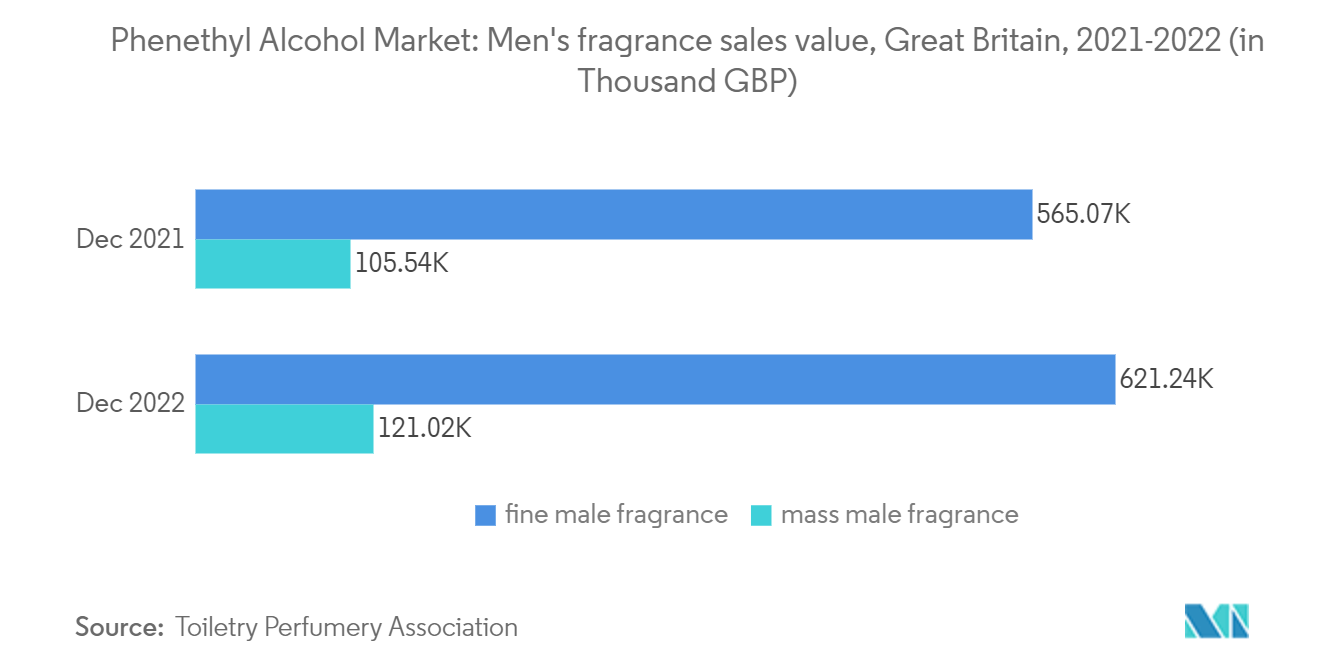Market Trends of Phenethyl Alcohol Industry
Phenethyl Alcohol is Extensively Used in Fragrances
The rise in demand for eco-friendly, natural, and custom-made perfumes and higher living standards are key factors driving market growth. Moreover, continued product innovations, increased product advertisement across various social media platforms, and increased demand for air fresheners such as aerosol sprays, room fresheners, and car air fresheners are expected to stimulate market growth. The consumption of personal care items such as soaps and detergents and the rise in knowledge of harmful effects of chemicals on the skin also influence demand for natural and bio-based fragrance ingredients since the natural 2-phenyl ethanol is mainly extracted from rose petals, a natural source for the fragrance ingredient.

The United States Is The Biggest Consumer Market For Phenethyl Alcohol
Phenethyl alcohol has a mild yet long-lasting scent profile, making it ideal for formulating calming essential oil blends. Moreover, Americans are turning towards essential oils due to their perceived health benefits, such as relieving headaches or migraines, supporting the demand for phenethyl alcohol ingredients for preparing aromatherapy products in the country. The fragrance industry is witnessing growth in the United States, driven by consumer preferences for diverse and unique scents or fragrances. For instance, according to the Bureau of Labor Statistics, the average annual expenditure on perfumes, cosmetics, and bath preparation products per consumer unit in the United States amounted to USD 211.82 in 2022, which increased from USD 182.29 in 2021. In addition, the rising spending on makeup products is anticipated to fuel the demand for phenethyl alcohol in the cosmetic industry. In 2023, according to Digital Commerce 360, the survey revealed that 10% of United States consumers purchase beauty products online daily. While 8% of consumers buy a few times a day, 13% purchase them weekly, 16% purchase them several times a month, 23% monthly, and 26% a few times a year.


